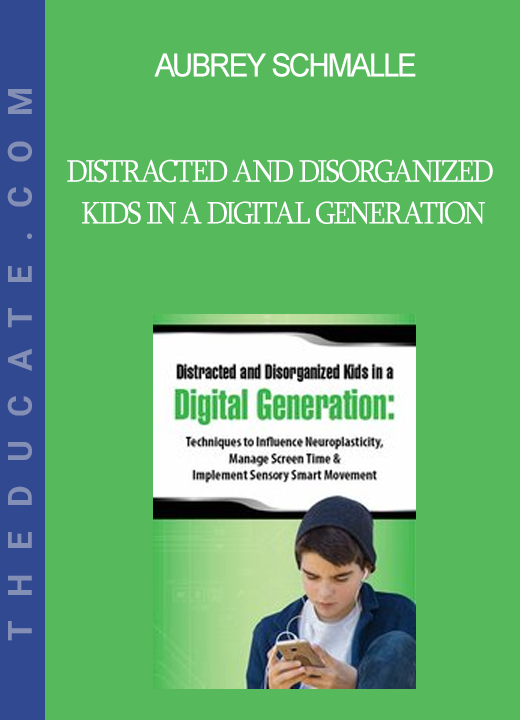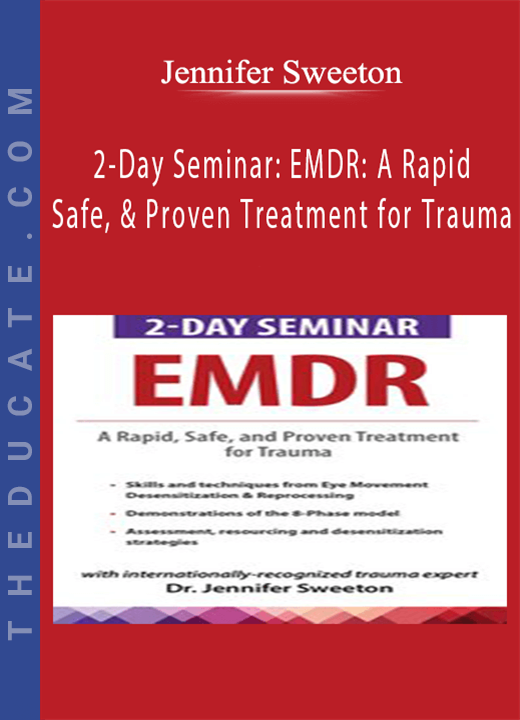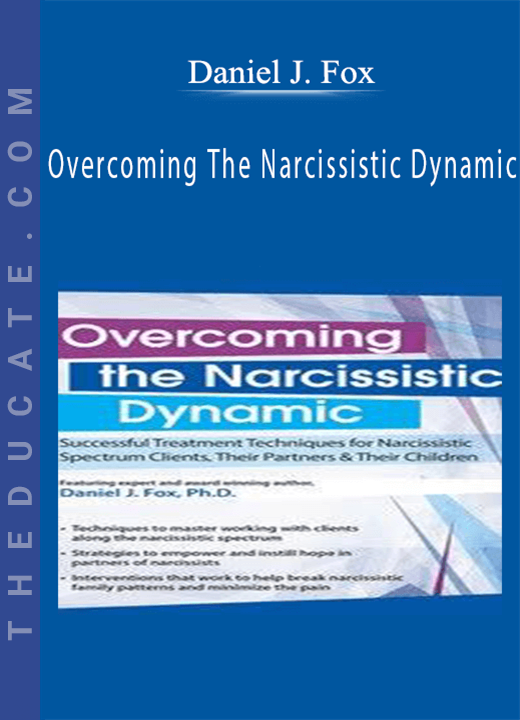Description

-
Aubrey Schmalle – Distracted and Disorganized Kids in a Digital Generation: Techniques to Influence Neuroplasticity, Manage Screen Time & Implement Sensory Smart Movement
- Faculty:
- Aubrey Schmalle
- Duration:
- 6 Hours 22 Minutes
- Format:
- Audio and Video
- Copyright:
- Dec 12, 2019
Description
Gen Z is the first generation to grow up with smart technology. The use of screens is not just impacting social skills and human interaction, it’s compromising neurosensory development!
As learning and leisure time becomes increasingly screen-based, children are over-using their visual systems at the expense of exploring the environment and activating their senses for learning through movement.
While the impact of screens on social interactions and self-esteem are being increasingly recognized, clinicians and educators need to understand the potential implications as it relates to neurosensory development.
As clinicians and educators, we are equipped with many programs and interventions based on neurodevelopmental principles.
Now, we need to apply them in the context of an increasingly digital world.
Treating requires a new framework to ensure we activate the senses for learning and model the habits of success.
This is especially true for children with ADHD, Autism, LD, sensory processing, and motor deficits, who, at baseline, require more opportunities for multi-sensory integration to increase attention and enhance brain development for learning than their neurotypical peers.
In this recording, you will enhance your existing therapeutic techniques to:
- Determine a child’s digital and sensory-learning profile to inform treatment planning
- Identify the influence of smart technology and screen time on neuroplasticity in children with ADHD, LD, Autism, and SPD
- Rebalance the brain-body connection through controlled activation of multiple senses
- Optimize connection and cognition while supporting recovery from dysregulation and digital overload
- Instill the habits of success: mindset, state regulation, and movement
Handouts
| Manual – Distracted and Disorganized Kids in a Digital Generation (25.1 MB) | 72 Pages | Available after Purchase |
Outline
4 D’s of a Digital Generation: Distraction, Disorganization, Dysregulation, and Digital Dementia
- The speed of digital information verses the speed of neurodevelopment
- Growing impact of technology on learning and behavior
- Specific challenges for children with learning, processing, and attention deficits
Rebalance the Brain-Body Connection
- Role of the senses in self-regulation, perception, and adaptive response patterns
- Sensory Imbalances: Overusing vision in a screen-based world
- Impact of weak links in sensory triads on learning and behavior
- Influence physiology to reduce disorganization and dysregulation
- Rebalance through controlled activation of multiple senses
A Powerful New Framework: Body Activated Learning™
- 3 Phase Approach: Optimize, activate, and regroup
- Optimize connection to the body through energizing or calming movement
- Activate the brain-body connection using sensory triads and vision exercises
- Regroup from screen-based and sedentary learning tasks triggering visual and body fatigue
- Experiential learning
Activate and Digitally Interactive Treatment Strategies
- Determine a child’s digital and sensory-learning profile
- Building Sensational self-awareness to engage and empower learners
- Proactive activities to support regulation and cognition
- Embedding regrouping opportunities to recover from dysregulation and overload
- Technology as a tool to support the brain-body connection
- Case studies, videos, and interactive learning
Influencing Neuroplasticity: Techniques to Balance Technology and Sensory Smart Movement
- Vision, auditory, vestibular, and more considerations for:
- ADHD
- Autism
- Dyslexia and dysgraphia
- Non-identified but digitally impacted children
Attacking Digital Dementia and Disorganization from the Inside Out
- Educate parents and schools
- Play and learning vs “Done for You” Technology
- Visualization vs videos and Playstation
- Creation vs consumption: Interactive learning in a digital age
- Remediation vs accommodation
Contagious Mindsets: Collaborate to Empower a Digital Generation
- Integrated support strategies: Use body activated learning within an RTI model
- Whole class intervention and universal design
- Small group instruction, social groups, and morning movement opportunities
- Individualized supports
- Teach to learn: Modeling and cross-training for Paraprofessionals
- Planning materials and resources for collaborative intervention
- Classroom set-up and sensory smart routines
- Merging sensory diets, sensory strategies, multisensory learning, and brain breaks
- Empowering conversations with children
Faculty
Aubrey Schmalle, OTR/L, SIPT Related seminars and products: 4
Aubrey Schmalle, OTR/L, SIPT, Certified Tomatis Consultant is an occupational therapist, providing advanced clinical evaluation and intervention in the area of sensory integration andlearning. She graduated from Boston University in 2003 with a Bachelors in occupational therapy and continued to advance her clinical knowledge through self-study, mentorship, certification in sensory integration theory and practice, and certification in the Tomatis Method and Tomatis-based auditory interventions. In 2011, she opened a private occupational therapy clinic, providing comprehensive evaluation and treatment of sensory processing disorders and related disabilities such as autism, ADHD, dyslexia, dysgraphia, and executive function deficits. She possesses advanced knowledge in visual-vestibular integration treatment techniques, treatment of postural-ocular and functional visual skill deficits, and intervention to address sensorymotor-perceptual factors contributing to dyslexia and dysgraphia. She provides independent educational occupational therapy evaluations across Fairfield County, CT and consults with school teams to optimize school-based intervention strategies and treatment techniques.
In spring 2018, she presented a case study utilizing the Tomatis Method and sensory integrative occupational therapy at the Tomatis International Convention in Warsaw, Poland. In 2015, she authored The Body Activated Learning Handbook and continues to develop programming, educational supports, and trainings for educators and related service professionals based on the Body Activated Learning™ approach.
She presents to educators, therapists, and nurses on the impact of sensory processing on learning and development and helps them optimize classroom and treatment strategies to support a neurologically diverse generation using Body Activated LearningTM. Most recently, she presented at the Developmental Disabilities Nursing Association of CT on using Body Activated Learning to enhance programming and facilitate independence when working with adults with Autism and developmental disabilities.
Speaker Disclosures:
Financial: Aubrey Schmalle is the owner of Sensational Achievements, LLC. She receives a speaking honorarium from PESI, Inc.
Non-financial: Aubrey Schmalle is a member of the American Occupational Therapy Association; and the Connecticut Occupational Therapy Association.






Reviews
There are no reviews yet.